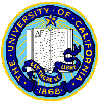 |
Scott Jordan | |
|
|
Web users are notoriously impatient, willing to wait only a few seconds before aborting a pending web request. This behavior unnecessarily taxes web server resources, which are dedicated to a connection that ultimately does not complete. While this is not as problematic at well-provisioned or lightly-trafficked web servers, where all incoming requests can be serviced with little or no queuing time required, such behavior is extremely detrimental to poorly-provisioned or very busy web servers, where server deadlock may occur and no users are adequately served.
In this work, we analytically derive, using queuing models, a service ordering for web servers that is useful under these extreme conditions and that takes into account the impatience of web users. The ordering is based on a revenue generation model that assumes a web server earns some amount from processing a user request to completion. This amount diminishes exponentially with the time spent in queue and in service at the web server. In such cases, a greedy algorithm maximizes server revenue and outperforms "fair" algorithms such a first-in-first-out by several orders of magnitude when server load is high. These performance gains continue even when the server passes into an overload situation, allowing the web server to operate even when completely saturated. These results are verified both analytically and via simulation, and have been shown to be useful for general Markovian queuing systems as well.
An Optimal Service Ordering for a World Wide Web Server (with A.C. Dalal), ACM Performance Evaluation Reviews, vol. 29 no. 2, September 2001, pp. 8-13.
Optimal Scheduling in a Queue with Differentiated Impatient Users (with A.C. Dalal), Performance Evaluation, vol. 59 no. 1, January 2005, pp. 73-84.
Portions of this work were supported by NSF. Any opinions, findings, conclusions or recommendations expressed in this material are those of the author(s) and do not necessarily reflect the views of the National Science Foundation or IEEE. This material is presented to ensure timely dissemination of scholarly and technical work. Copyright and all rights therein are retained by authors or by other copyright holders. All persons copying this information are expected to adhere to the terms and constraints invoked by each author's copyright. One print or electronic copy may be made for personal use only. Permission must be obtained from the copyright holder for systematic or multiple reproduction, distribution to multiple locations via electronic or other means, duplication of any material in these papers for a fee or for commercial purposes, modification of the content of these papers, reprinting or republishing of this material for advertising or promotional purposes or for creating new collective works for resale or redistribution to servers or lists, and to reuse any copyrighted component of this work in other works.